As part of their Master’s degree in Forest and Nature conservation at Wageningen University & Research, students Lucy Dötig and Fleur Bokma did a six months internship this year with Rewilding Europe, investigating habitat suitability for fallow deer, red deer and European bison in the Rhodope Mountains Rewilding Landscape. We checked in with them recently to see how they have been getting on.
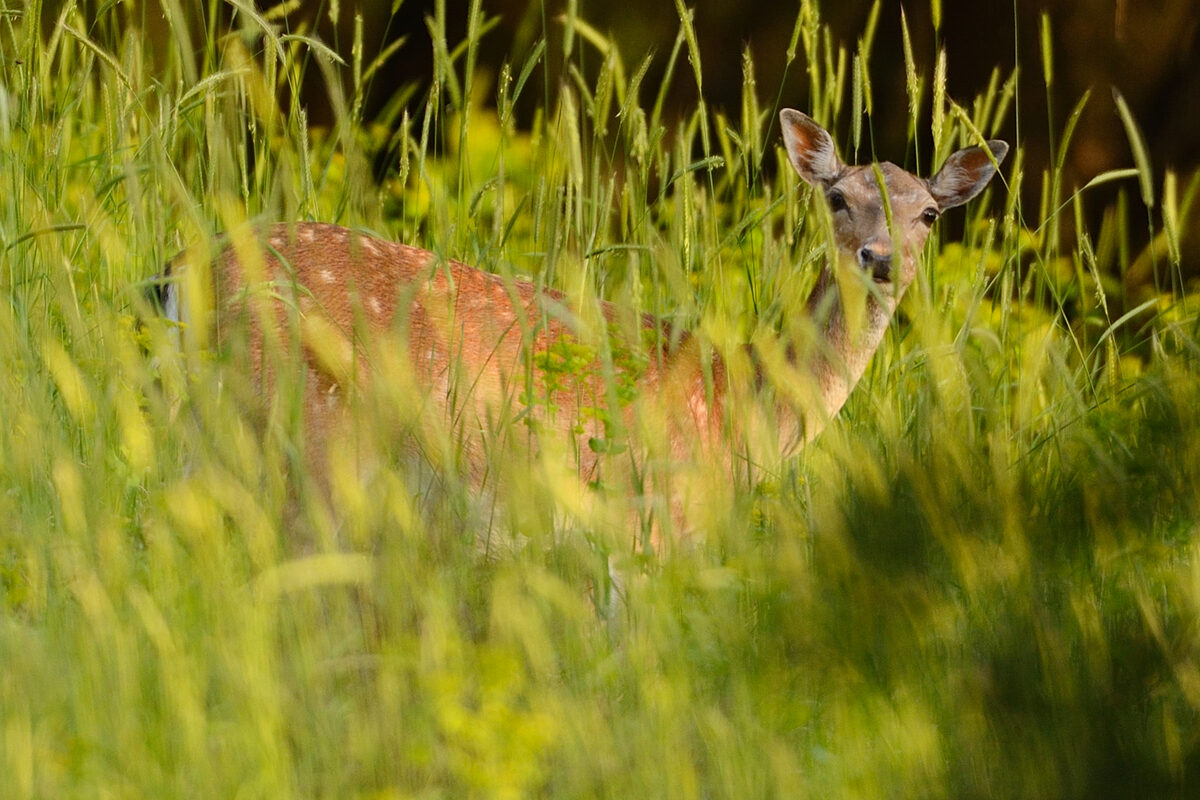
Tell us more about your research, how have you approached it?
Fleur has investigated the suitability of the environment for fallow and red deer in the Rhodope Mountains landscape. A range of factors was assessed that influence survival; such as the slope and elevation of the land, temperature, water presence, and proximity to roads and settlements. The carrying capacity of the suitable areas was then estimated to indicate how many animals the habitat could support without it becoming degraded.
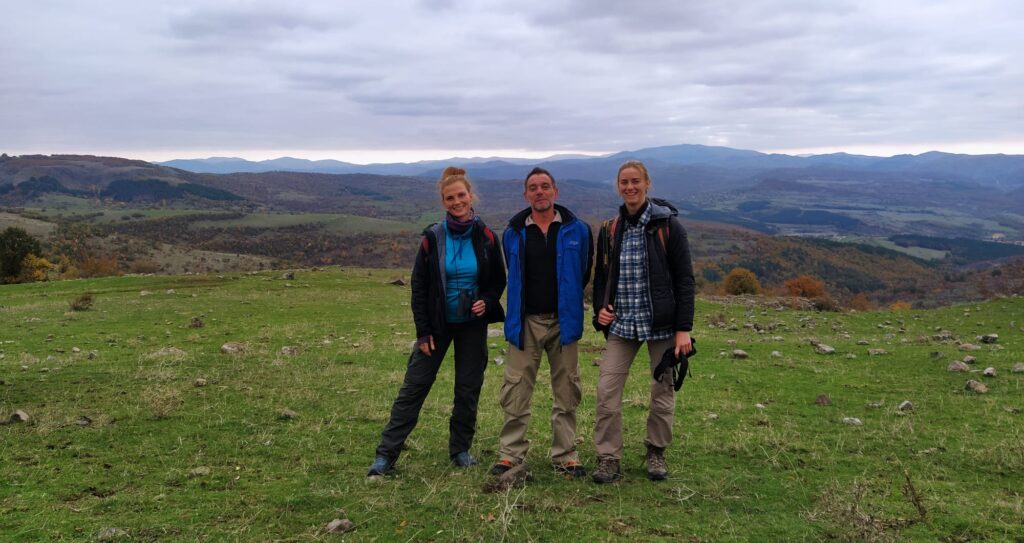
Some deer were collared with GPS transmitters, providing their exact locations at any given time. From this, Fleur could see in detail where they were spending time. She used this GPS data together with topographical, environmental and social factors to see how this influenced their presence or absence.
Since it was already known that fallow and red deer populations in other European countries prefer different habitats in winter versus the rest of the year, suitability was studied for winter and non-winter. The comparison was then mapped using GIS mapping software, resulting in an overview of unsuitable (yellow) to highly suitable (red) areas (Figure 1).
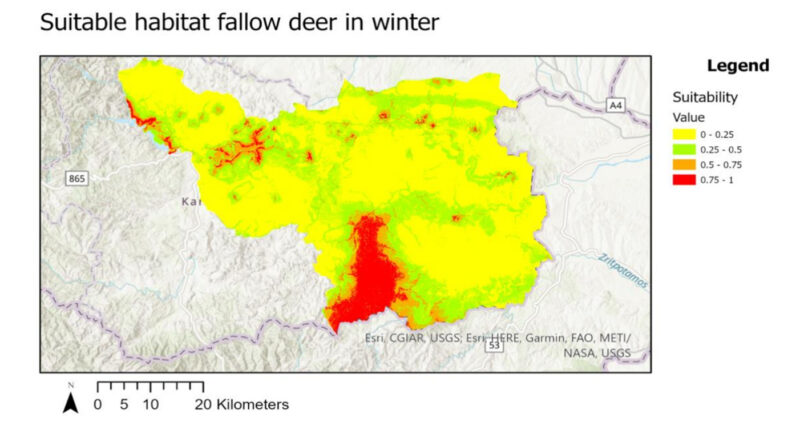
For the estimation of the nutritional carrying capacity, Fleur first analysed the abundance of different vegetation types (e.g. grassland, shrubs, forest). The outcome for the whole rewilding landscape is shown in Figure 2. She then investigated the abundance of land cover in the highly suitable areas. This way it became clear how many fallow deer and red deer could be sustained by the vegetation.
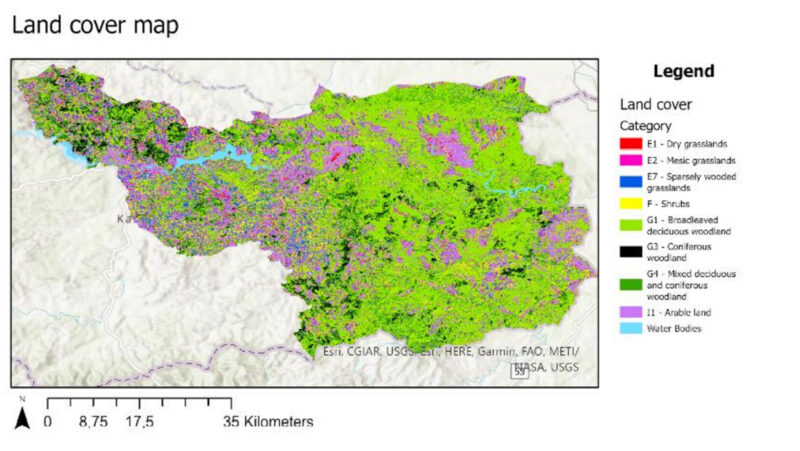
Lucy’s analysis focused on habitat suitability and connectivity for the European bison. In order to know where more bison could be reintroduced, they wanted to know whether the environment is suitable and whether the suitable areas are connected with each other to enlarge the potential future distribution range.
The connectivity to the existing bison herd in Studen Kladenets is, for instance, an important factor to consider when reintroducing more individuals to another area. If the animals can find each other, the gene pool would be strengthened, making the species stronger overall.
From a literature review and gathering expert knowledge, three models were built to outline the variables that influence bison habitat preferences such as the distance to forest, water source, grassland and settlements. The models were then implemented into advanced GIS mapping software to create habitat suitability maps and a connectivity analysis (Figure 3).
And what did you find?
That the rewilding landscape offers a lot of suitable habitat for bison in the east of the Rhodope Mountains. The research also revealed the considerable impact human activity has had on the landscape, with infrastructure (major roads, and railways) and settlements leading to a fragmentation of suitable habitat – underlining the need for more connectivity.
Figure 3. Habitat suitability map for bison, with Model 1 (right) showing suitability based on environmental factors only and Model 3 also taking into account fragmentation and human presence. The values 1 to 10 represent unsuitable to highly suitable habitat.
For fallow deer and red deer, seasonality affects the distribution of suitable habitat in the Eastern Rhodope Mountains. You could see that suitable habitats in winter were frequently located in different places, compared with the other seasons. However, most of these areas were close to each other.
It is recommended that areas, where their winter and non-winter suitable habitats are close to each other, are chosen for reintroductions, minimizing the need for the deer to make potentially dangerous crossings over major roads, or longer routes where they may encounter more hazards.
It was also found that the two deer species prefer different types of land cover. Red deer showed a strong preference for agricultural land, which might lead them to eat the crops of farmers, therefore increasing human-wildlife conflicts.
How does your research contribute to the European rewilding mission?
Our results provide detailed insights into habitat suitability and preferences – a critical component of any reintroduction. It will help to support Rewilding Europe’s future decision-making with regard to deer and bison reintroductions in the Rhodope Mountains.

What were the highlights?
We got to see so much wildlife, including wildcats, golden jackals, griffon vultures – and of course plenty of deer and bison. Getting to know the locals and their culture was also a cool experience that we will cherish.
And what has been the value of the experience from a personal point of view?
We have learned a lot. Not only about the study species, the rewilding landscape and the programs we used, but especially about the process we went through. Learning how to structure the project, the timing, and how to handle difficult situations for example. We’re proud to have had our own project, full of new insights and life lessons.
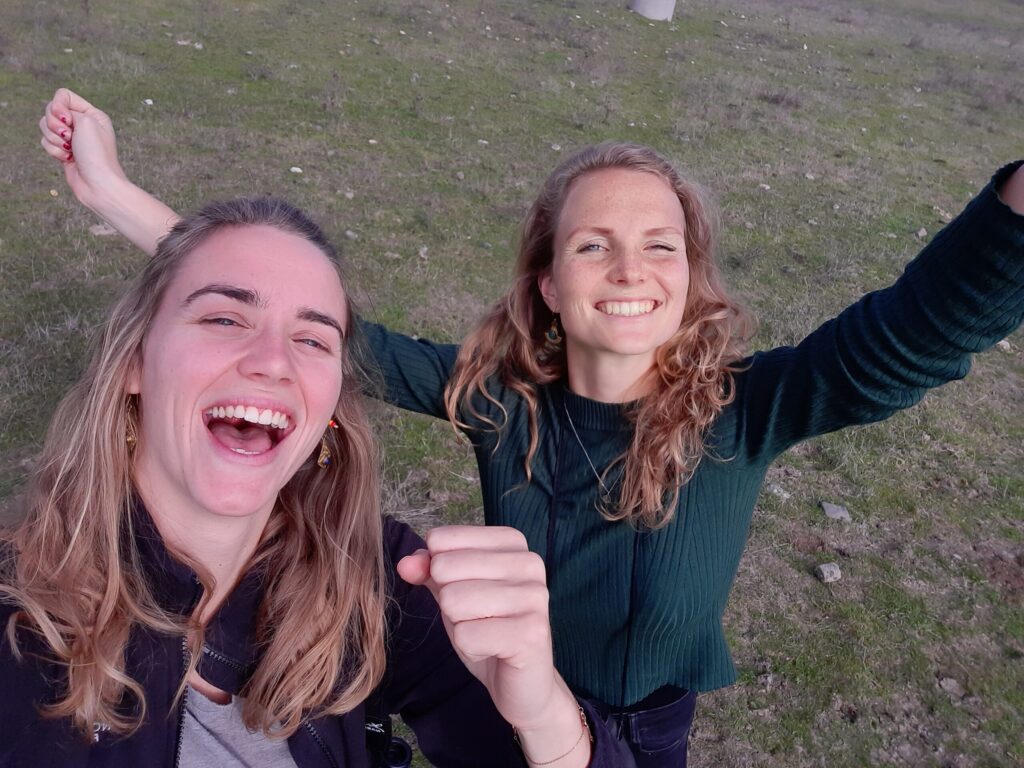
What is next for you both?
Lucy is doing her Master’s internship at ARK Natuurontwikkeling. She studies the habitat suitability of the European wildcat in Midden and South Limburg and across the border part of western Germany, analysing future dispersal routes and highlighting potential conflict zones where vegetational improvements are needed. The study area covers parts of the Netherlands and parts of Germany, which makes it a transboundary project in which Lucy can also play a role in contacting experts from both countries, facilitating an exchange of valuable information on wildcat ecology.
Fleur is doing her Master’s internship at the Dutch Deltaplan for Biodiversity Recovery. Their focus is on finding ways to restore biodiversity in a completely human-influenced landscape. The focus of her internship is on ‘Basiskwaliteit Natuur’ which is being studied by Vogelbescherming, SoortenNL, and Naturalis.
